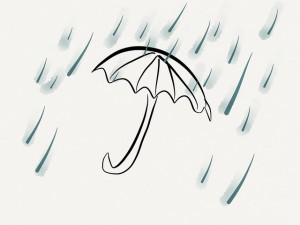Brand awareness is created through advertising and media presence. In essence, it’s the practice of aligning a specific brand with a required product or service in the mind of the consumer.

There is a discrepancy between the level of brand awareness in the travel insurance industry and the purchasing decision made by the consumer. In marketing speak, this decision is known as the “purchasing acquisition” – the moment at which the brand takes ownership of a customer by influencing him or her to spend his or her money on its products.
Brand Awareness Is Not the Only Fruit
The problem, essentially, is that brand awareness isn’t the same thing as the moment of purchasing acquisition. In an area like insurance, where the brand is compelled to fight against a general level of consumer distrust, knowing about a brand, associating it with the travel insurance product and even visiting its website are not the same thing as the buying choice.
It is important to recognise that “consumer distrust” is a broad way of talking about consumer confusion. It is not necessarily the case that consumers actively believe that EU travel insurance companies (for example) are “out to get them”. It is, however, true that a consumer faced with a confusing amount of product choice may be unable to divine the product that is best for his or her specific situation.
Cutting Through the Red Tape
Smaller brands have woken up to this fact, and have aligned their own products with the consumer ideal of simple information. The goal is to make the consumer feel that a brand is “straight talking” – in other words, that it delivers its travel insurance simply and therefore has nothing to hide behind acres of red tape.
This tactic is based on an important recognition. Consumers align the existence of multiple tariffs, or policy types, with the possibility that they won’t get the best deal on their insurance (or whatever product they are researching) if they choose to use a brand that forces them to make extensive, staggered choices prior to the moment of purchase. In essence, they may feel that they are not qualified to judge which policy is best for them – and if the brand in question makes it hard for a consumer to find an expert willing to guide them through the process, that consumer may simply go somewhere else where product purchase seems less confusing.
The Importance of Research
One of the key elements in this phenomenon is the amount of researchconsumers do before they purchase EU travel insurance. Research giant Global Reviews conducted a study of purchasing behaviour in insurance consumers over November of 2012, and found that a potential customer spends an average of four hours looking into the products provided by different vendors.
This long research time clearly indicates a consumer worry. The more time spent looking into different options, the bigger the apparent customer concern: which in the case of insurance is (as noted above) the basic fear that a person is going to miss out on the right deal because he or she is simply confronted with too much confusing information.
During this research period, a consumer who finds a smaller, less advertised company apparently offering a much simpler tariff of policies, is seemingly more likely to abandon the big brands in favour of the small.
Advertising Only Gets You So Far
Being visible is obviously necessary, for any brand. If consumers never find out about you, they will never buy your products.
That said, it seems to be the case that consumers are able to find alternatives to large insurance providers during their research period – presumably through targeted website optimisation combined with the consumer’s clear willingness to trawl further through his or her search results to compare the products on offer.



